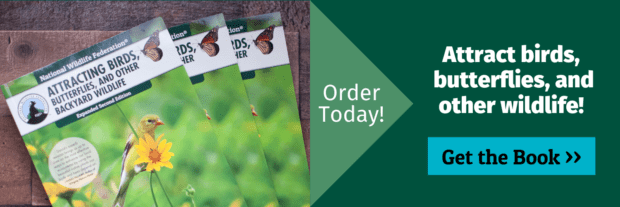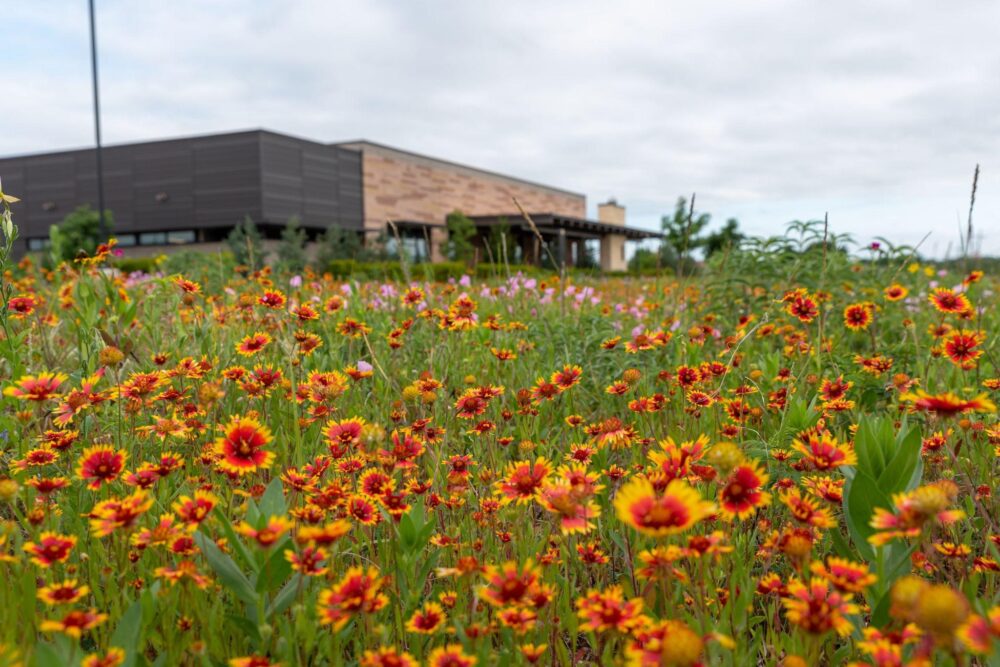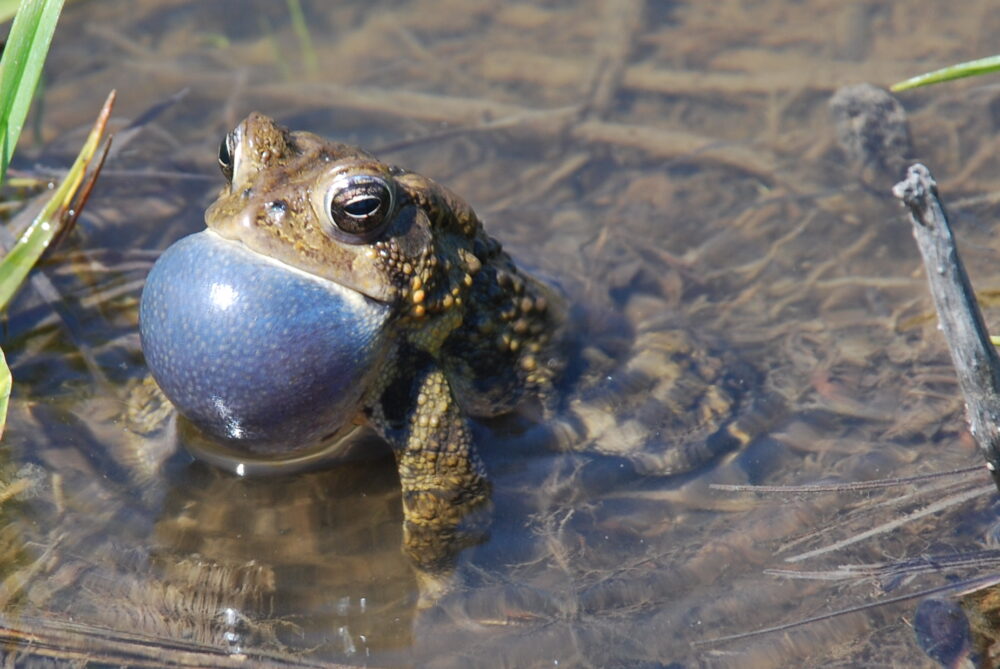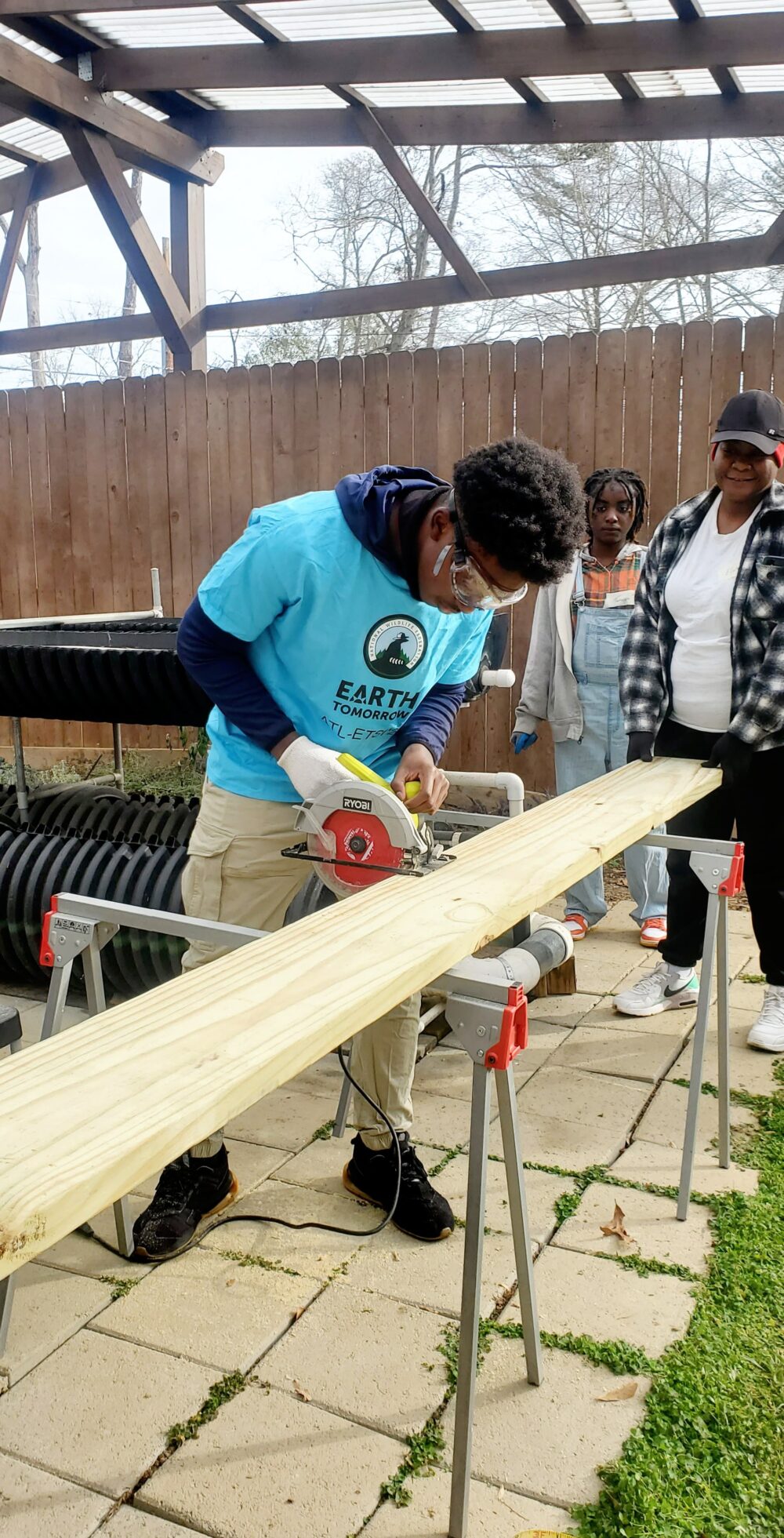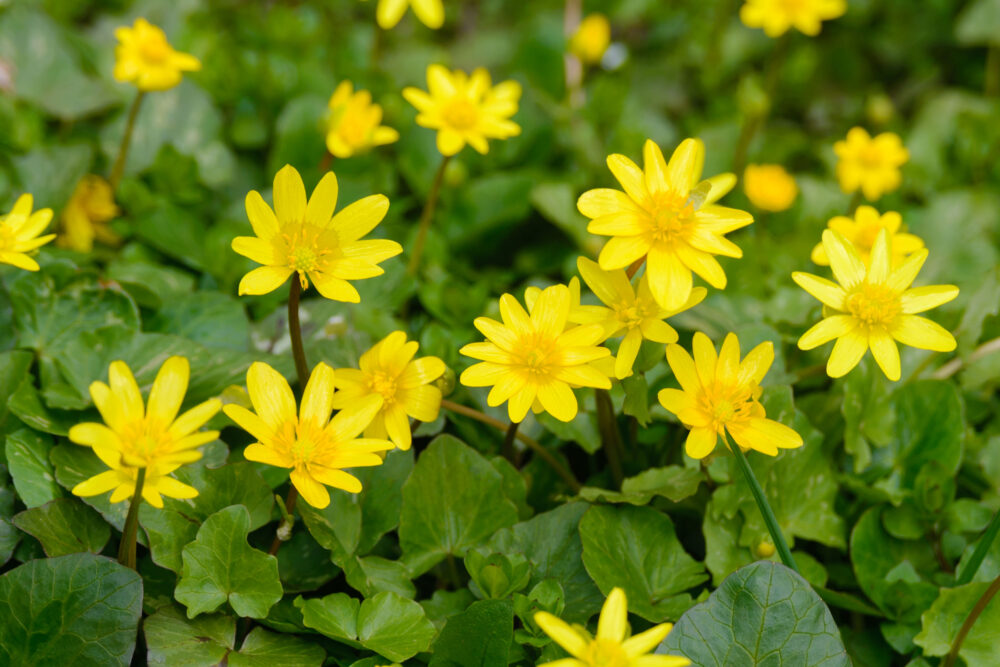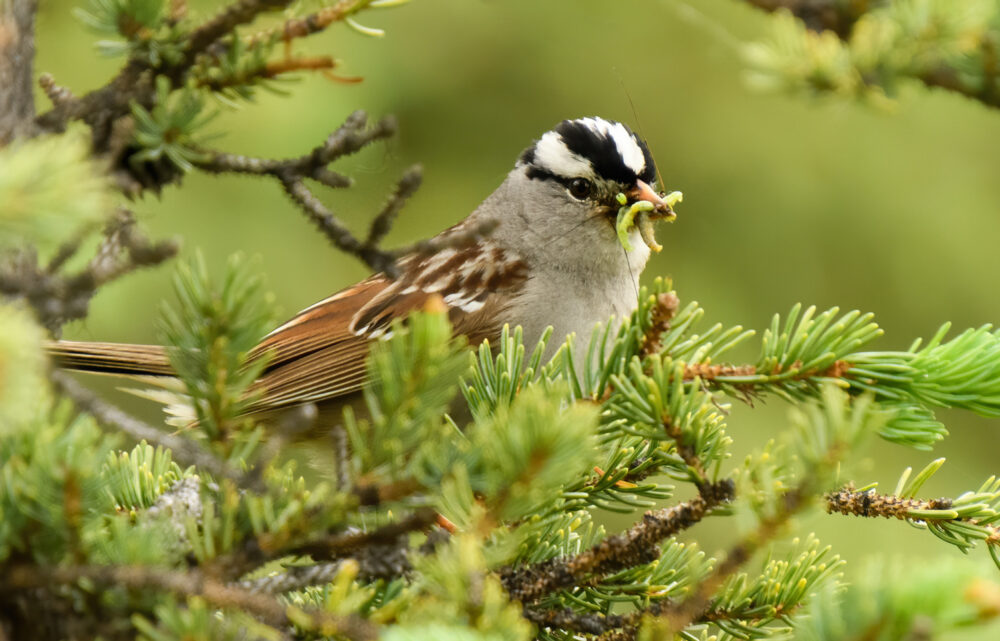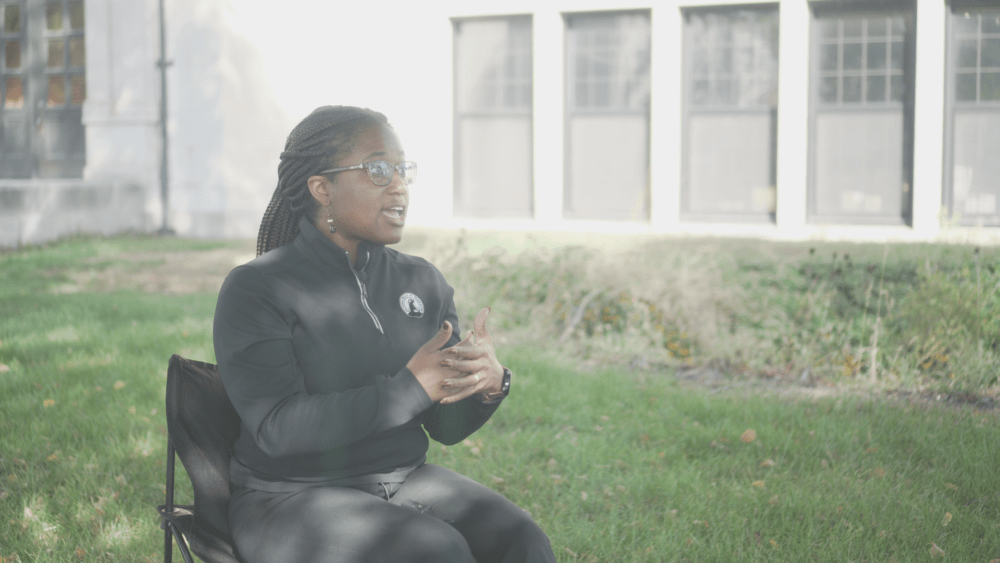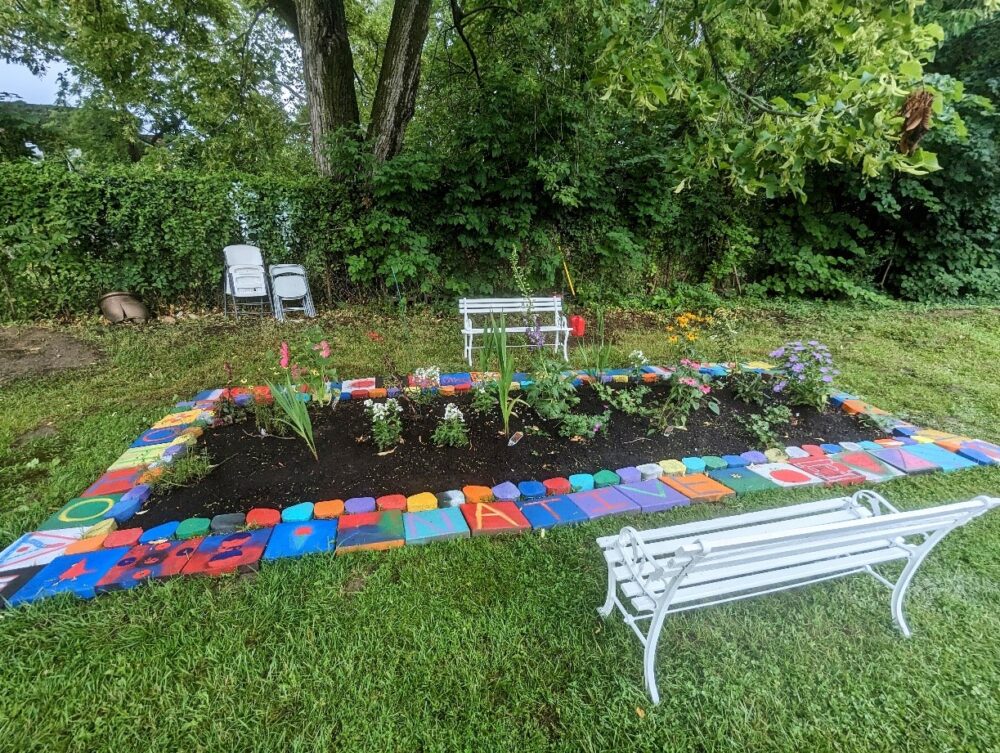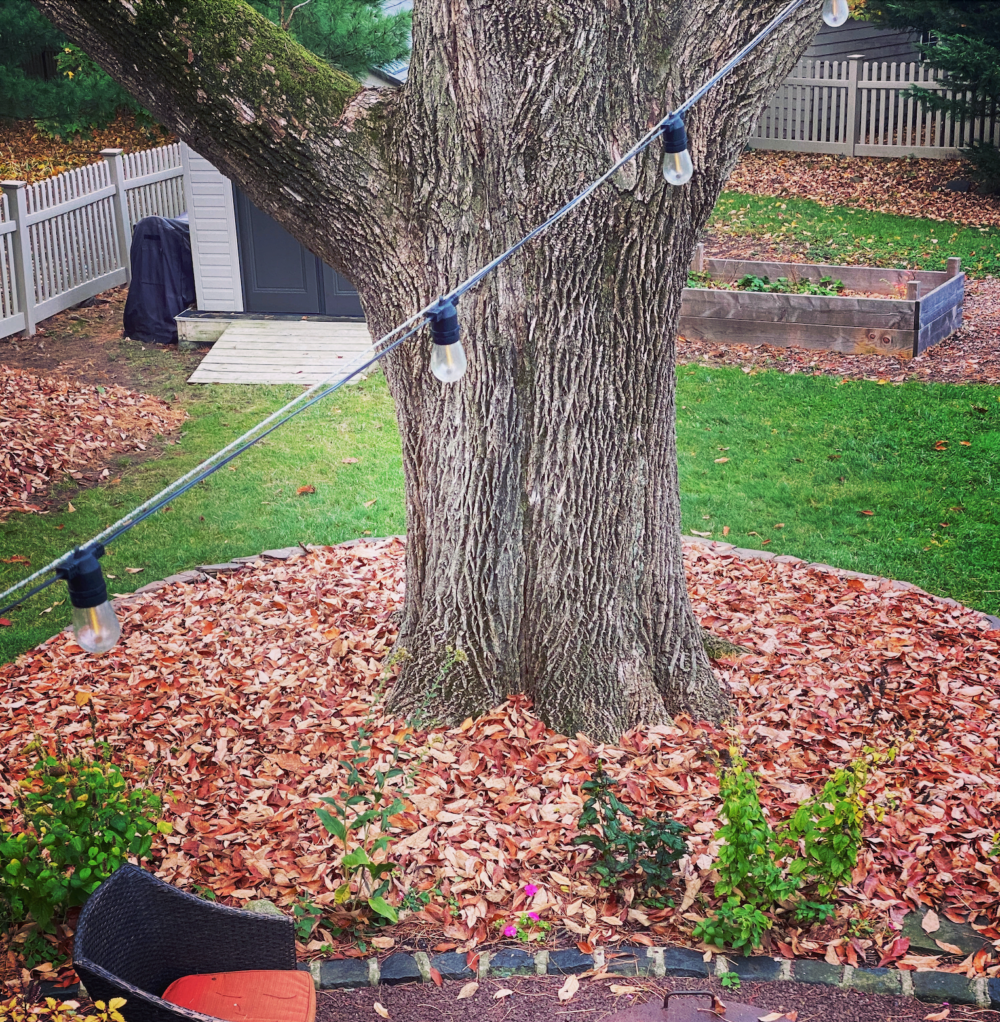We have much more to do and your continued support is needed now more than ever.
Six Tips for Pollinator Gardens in Small Spaces
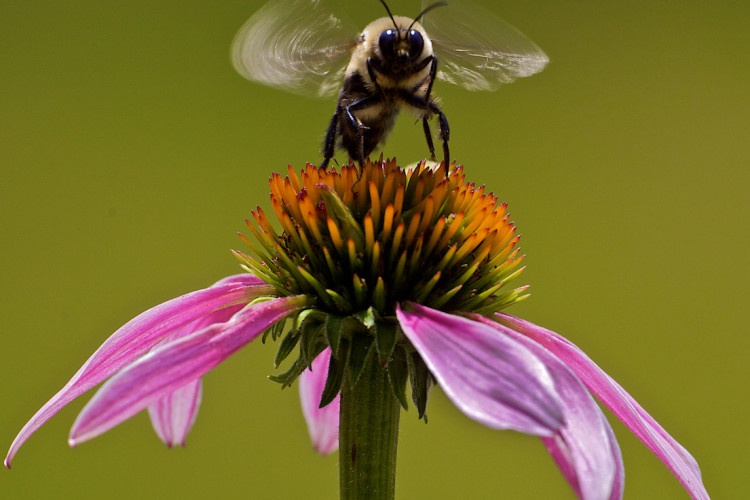
June 20-26 is National Pollinator Week. You can participate by creating a garden habitat to support pollinators such as bees, butterflies, and hummingbirds. Register it as Certified Wildlife Habitat with the National Wildlife Federation’s Garden for Wildlife program and add your voice to the growing number of people that are making a difference for pollinators right in their own yards and gardens. Plus, your certified garden will count towards meeting the goals of the Million Pollinator Garden Challenge.
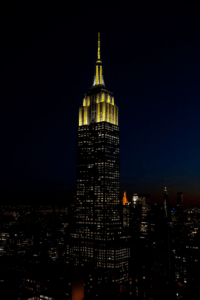
On June 22, the Empire State Building will be lit up in black and yellow to highlight pollinator decline and inspire people to plant pollinator gardens. While New York City, with its high-rises and dense urban environment, might seem like an unlikely place to promote pollinator gardening, the reality is that you can plant a pollinator garden anywhere, including in containers, even in urban areas and in small spaces. (Learn more about how New Yorkers are working to create pollinator gardens across NYC and how you can make a difference.)
Here are six tips on creating pollinator-friendly gardens in small spaces.
Plant Natives
Pollinators need flowering plants that offer nectar and pollen as a food source. Native plants are always the best choice to support pollinators because their lifecycles are in sync with each other. For example, some native plants put forth their blossoms at the same time that bees emerge in the early spring and others bloom later when hummingbirds return from migration. Some native plants bloom in the late summer and fall when monarch butterflies are migrating south. Many bees have a strong preference for the nectar and pollen of native plants that share their range. Butterfly caterpillars can only eat the leaves of a small number of native plants that they evolved with, called host plants, and without those host plants, butterflies cannot successfully reproduce. Monarch butterfly caterpillars, for example, can only feed on milkweed.
There are many native plants from perennial wildflowers to small shrubs that will thrive in small garden spaces, even in containers.
Add Annuals and Herbs
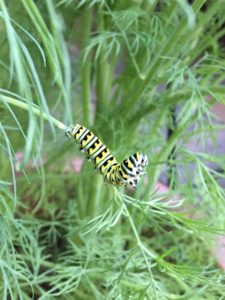
In addition to natives, you can include annual ornamental garden flowers that will do well in small garden spaces and that are a good source of nectar and pollen, such as zinnias, salvias or sunflowers. Culinary herbs are also a great choice. For example, herbs such as dill and parsley are the host plants for black swallowtail butterfly caterpillars and if you let herbs such as rosemary, lavender, basil and oregano bloom, they are wonderful nectar sources.
Plant in Containers
If you don’t have a traditional garden space where you can plant directly in the ground, you can plant in containers and place them on your patio, deck, rooftop or front stoop. Select a few different kinds of plants of varying heights, colors and textures. Not only will this make the container more attractive to a diversity of pollinators but it creates a look pleasing to the human eye too.
If you’re gardening in containers, get the largest ones possible, to allow room for roots to grow and so the potting mix takes longer to dry out. Choose plant varieties that are compact and that can do well in dry soils, as containers dry much more quickly than a garden bed in the heat of the summer. Water regularly, but make sure there are drainage holes at the bottom of the container for excess water to run off. If the container doesn’t have adequate drainage holes, add small rocks or pieces of broken clay flower pot to the bottom before filling so that plant roots don’t sit in water.

Add Water
Pollinators need water. Provide it by putting rocks in a birdbath and then filling it halfway with water. The rocks will act as landing pads for thirsty bees and other insects. You can also create a puddling area for butterflies. Butterflies like drink up muddy water because it’s rich in minerals. Simply fill a birdbath with a mix of compost and sand and keep it very wet. Hummingbirds also need to drink, and a traditional birdbath filled with water will do the trick.
Plant Densely, Think Vertically
Whether you’re planting in the ground or in containers, plant densely. Not only will this minimize open ground for weeds and provide instant visual impact, it will offer pollinators hiding places to get out of strong winds and rain and to hide from predators.
Also, think vertically. Vines will climb up a trellis or lattice against a fence or a wall and can greatly increase the available habitat in a small space. Many native vines are great nectar and pollen sources for pollinators.
Include Places to Raise Young
We’ve already mentioned host plants for butterfly caterpillars. You can also offer special nesting structures for native bees. Unlike the honey bees, most of the over 4,000 native bee species are solitary and don’t form hives. An individual female bee will seek out a tunnel in sandy, rocky soil, in decaying wood, or in an old plant stem where she’ll create a series of small chambers in each of which she’ll lay an egg provisioned with a ball of nectar and pollen. Provide these resources in your garden space and bees might nest there. You can also put up a special bee house to attract nesting bees.

